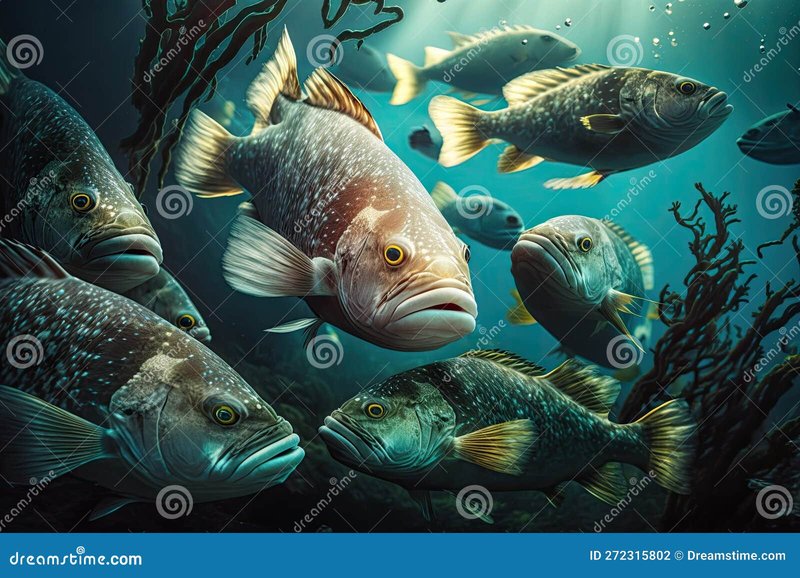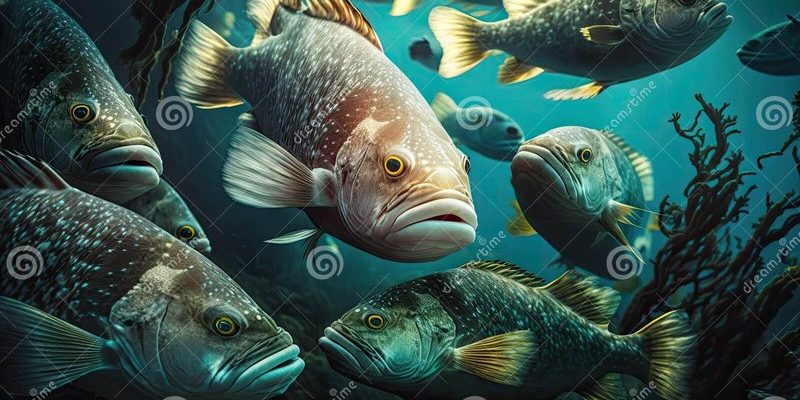
Imagine diving into the ocean and meeting a cod face-to-face. You’d notice its streamlined body, sharp senses, and even a few surprises up its ‘sleeve.’ These adaptations aren’t just cool features; they’re survival strategies that have evolved over millions of years. Let’s dive deeper into what makes the cod such a successful inhabitant of the sea.
Streamlined Body for Efficient Swimming
One of the first adaptations you’ll notice about cod is their streamlined body, which helps them swim efficiently in the water. Picture the difference between a boat designed for speed and one built for stability. The cod’s form is optimized for quick bursts of speed, allowing it to evade predators and swiftly chase after prey.
Their unique body shape reduces drag as they move through the water. This means they can swim faster and expend less energy while doing so. Imagine running with a heavy backpack versus sprinting freely; it’s much easier to go fast when you’re not weighed down by unnecessary baggage. Essentially, the cod’s sleek body helps it conserve energy while being agile in its underwater realm.
Another aspect of this streamlined design is their fins. Cod have large pectoral fins and a powerful tail that function much like the rudder and engine of a boat. Together, these fins not only help with propulsion but also give the fish excellent control over its movements. Think of it as having both a sports car and a reliable sedan—every feature serves a purpose, making the cod an efficient swimmer.
Camouflage for Safety and Hunting
Next up is the cod’s remarkable ability to blend into its surroundings. This camouflage helps it stay safe from predators while also allowing it to ambush prey. Cod generally have a mottled coloration that mimics the rocky ocean floor or sandy substrates where they often dwell.
Imagine trying to spot a well-camouflaged chameleon in a garden. If it’s done right, it’s practically invisible. Similarly, the cod employs this trick to avoid becoming a meal for bigger fish. Their ability to adapt their coloring to match their environments gives them a strategic edge in the wild.
But this camouflage doesn’t just serve as a defense mechanism; it plays a role in hunting too. Cod are opportunistic feeders, meaning they’ll eat whatever is available, from small fish to crustaceans. When they blend in with the seafloor, they can stealthily approach their targets without alarming them. It’s like being an undercover agent in the ocean—sneaky and effective.
Highly Developed Sensory Systems
Let’s talk about how cod perceive their underwater world. They possess highly developed sensory systems that give them an advantage in finding food and avoiding danger. Cod have excellent vision and can detect motion even in low light, making them effective hunters during both day and night.
One of the standout features of their sensory system is their Lateral Line system. This specialized network of nerves runs along the sides of their bodies and detects vibrations in the water. Think of it as a super-sensitive radar that alerts cod to the slightest movements around them, helping them locate prey or dodge threats.
In murky waters where visibility is low, this adaptation becomes especially vital. For another layer of practicality, the cod can also taste the water around them through specialized receptors in their mouths. This ability allows them to detect the presence of prey even before they see it. You might say they have a sixth sense when it comes to hunting!
Adaptations for Reproduction
When it comes to ensuring the survival of their species, cod have developed some impressive reproductive strategies. They engage in a behavior called “spawning,” where females release thousands of eggs into the water, and males then fertilize them. This might seem like throwing a lot of darts at a target, but it’s an effective way to ensure that at least some of the eggs survive.
Cod tend to cluster in specific spawning grounds that offer favorable conditions—think of these places as their “baby nurseries.” The eggs then float to the surface, where they hatch after a few weeks. This strategy allows young cod to benefit from nutrient-rich waters, giving them a better chance of surviving their early life stages.
However, cod aren’t just prolific breeders; they also display behaviors that help protect their young. In some cases, adult cod will stay near their spawning grounds to guard the eggs from predators. It’s a bit like a parent watching over a toddler at a bustling playground—keeping a watchful eye to ensure safety.
Flexible Diet for Survival
When it comes to diet, cod are true omnivores. This flexibility in what they eat is a key adaptation that helps them thrive in various habitats. Their diet typically includes small fish, squid, and crustaceans, but they can adjust their food choices based on availability.
Think about it: if you only ate one type of food, your options would be limited, and you might go hungry. Cod, on the other hand, can switch things up when their preferred meals aren’t available. This adaptability not only makes it easier for them to find food but also means they can thrive in different environments, from rocky shores to deep-sea habitats.
Moreover, their strong jaws and sharp teeth enable cod to capture slippery prey effectively. Much like a Swiss Army knife, their mouths are equipped for various tasks, making it easier for them to eat whatever they can find. This trait is crucial when food sources fluctuate due to seasonal changes.
Physiology for Regulating Buoyancy
Another fascinating adaptation is the cod’s ability to regulate buoyancy thanks to an organ called the swim bladder. This gas-filled sac allows cod to remain suspended in the water column without expending much energy. Imagine floating effortlessly in a pool; that’s essentially what the swim bladder enables the cod to do.
When cod want to ascend or descend in the water, they can adjust the amount of gas in their swim bladder. If they want to rise, they’ll increase the gas, which helps them float upwards. Conversely, by decreasing gas, they can sink to deeper depths. This adaptability for depth control means they can search for food at different levels in the ocean without tiring themselves out.
However, this adaptation is especially crucial for handling changes in water pressure. As cod dive deeper, the pressure increases, which can be stressful for many fish. Their swim bladder helps them cope with these changes, allowing them to thrive in a range of depths from the shallows to the ocean’s depths.
The Role of Social Behavior
Finally, let’s explore how social behavior plays a role in cod survival. Cod tend to form schools, especially when they’re younger, and this behavior provides multiple benefits. For one, swimming in groups can offer protection from predators; there’s safety in numbers.
These social structures also help cod find food more efficiently. When they school together, they can coordinate their movements for hunting, making it easier to chase down prey. It’s like a well-orchestrated dance, where everyone works together to get a meal.
Moreover, forming schools can enhance reproductive success. During spawning season, large groups of cod gather together, increasing the chances of fertilization. This social behavior shows that cod aren’t just solitary beings; instead, they thrive in a community—much like how humans often come together for safety and support.
In conclusion, the cod is a remarkable example of adaptation in the underwater world. From its streamlined body and camouflage skills to its social behaviors and flexible diet, each trait has evolved to maximize survival in the ever-changing ocean environment. Just like we learn to navigate our own complex world, the cod demonstrates the art of thriving against the odds. Whether you’re a fan of marine biology or just curious about the creatures that call the ocean home, the cod’s story is one of resilience and ingenuity in the deep blue sea.

